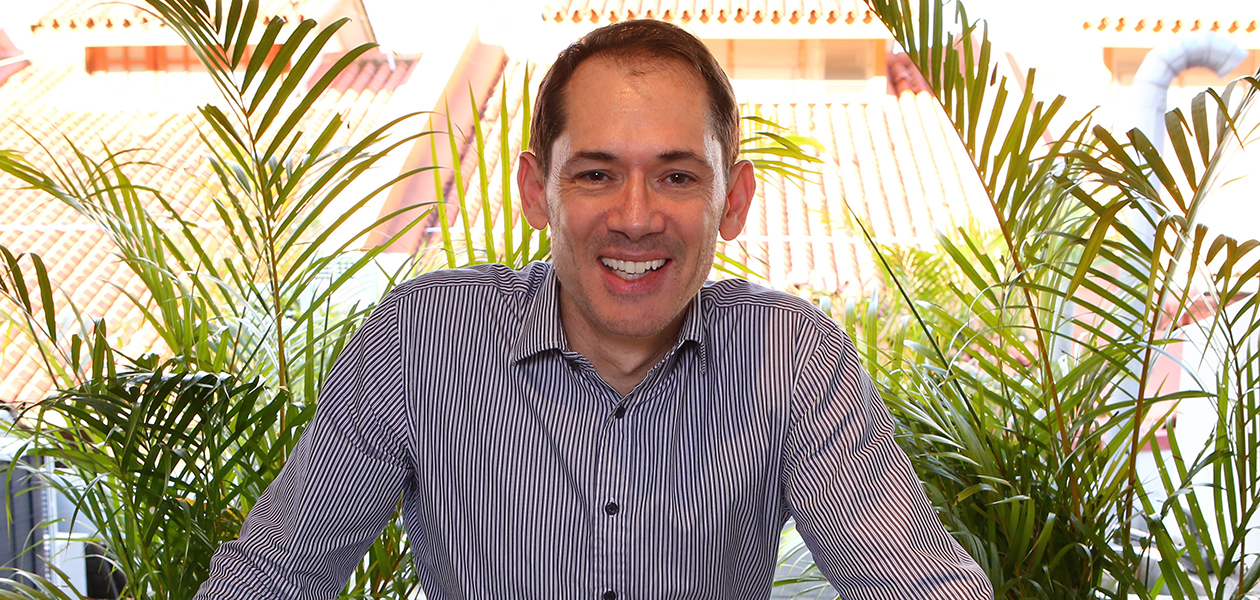Open innovation is not just skin deep
By partnering with Singapore's National Skin Centre, Good Pharma Dermatology was able to quickly bring an itch-reducing moisturiser to the market.
Not everyone is blessed with flawless skin. For those suffering from dermatological conditions, itch is a common symptom which take a toll on quality of life and even result in a loss of confidence in social settings.
As scientists and clinicians gain a better understand of the underlying causes of dermatological diseases, novel pharmaceuticals that help manage skin irritation are being identified. Yet, getting these compounds from bench to bedside remains an uphill task—formulation, packaging and commercialisation strategy are just some of the barriers that need to be surmounted.
Helping to bring skin care and consumer health products to the masses is Good Pharma Dermatology, co-founded in 2013 by healthcare entrepreneur Jason Humphries. Partnering with Singapore’s National Skin Centre, he was able to rapidly develop and commercialise Suu Balm, an itch-relieving moisturiser, which was launched to doctors in Singapore in the first quarter of 2015. Retail pharmacies began to carry the moisturiser in 2016, and the product is now available in Cambodia, Malaysia, Korea, Taiwan, Thailand, the Philippines and Vietnam.
In an interview with IPI, Humphries shares how open innovation has been pivotal to his company’s success.
1. What is the core competency of your company?
Our core competencies are in the area of commercialising of innovative consumer health products. This encompasses market assessment, go-to-market strategy and execution, primarily in Asia.
2. Was there a turning point in your company's history that convinced you that open innovation was the right way to go?
We still have a business where we distribute pharmaceutical products for some large multinational companies. However, we felt that such a business model helped build long term value for those principals but did not help us secure long-term revenue.
Hence, we started looking for products that we could develop into full-fledged brands for commercialisation, and we saw the importance of working with experts who had developed technology with real consumer needs in mind.
3. How has open innovation contributed to Good Pharma Dermatology’s business growth?
Open innovation has certainly benefitted the company. For example, IPI introduced us to Dr Tey Hong Liang, a world-renowned expert in itch linked to sensitive skin conditions such as eczema, at the Singapore National Skin Centre.
Dr Tey had been frustrated by the limitations of existing moisturisers on the market. Moisturisers are a crucial first-line intervention for most sensitive skin conditions, but most of them do not relieve itch, which is the biggest complaint of those suffering from sensitive skin conditions.
Hence, Dr Tey developed a novel agent that not only replicates the features of the best available moisturisers which have occlusive and healing properties, but also gives almost instant relief from itch. As a result of his innovation, those suffering from eczema applied the moisturiser more frequently, leading to better skin health.
We have commercialised this product as Suu Balm with cumulative e-retail sales of around S$10 million over the past three years. Our focus is on meaningful differentiation, so we have also extended the original product offering by tailoring it specifically for children and those with sensitive skin, making sure that we do not use potentially irritating ingredients found in almost all other skin care products.
4. How do you encourage a culture of open innovation in your company?
We are a very small company, with some 20 people spread across three countries. As such, our team members know that if they come up with good ideas, they will be credited as having originated the idea and be encouraged to quickly execute the strategy, collaborating with external partners where necessary.
The important thing is to start with the right people and to recognise their efforts. It’s invigorating to work with talented individuals who are creative, can make quick decisions and have the ability to execute an open innovation strategy.
5. What are some lessons that you have learnt in the process of engaging in open innovation?
When considering an open innovation strategy, you need to collate information and gather feedback, then be quick and decisive about the direction to take. Of course, you would then have to back up the decision with resources and push the strategy through.

